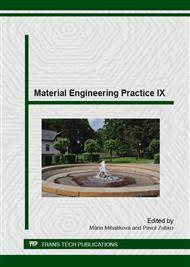p.165
p.169
p.174
p.177
p.182
p.186
p.190
p.194
p.198
Selection of Materials for the Body Deformation Zones
Abstract:
Deformation characteristics are analyzed for stress components deformation zones to move and bend. To verify the appropriateness of the proposed model were experimentally determined strength and deformation characteristics of deep-drawing steel DX 57 D, microalloyed steel HSLA , high-strength multi-phase steels DP 600 and TRIP, anti-corrosive austenitic steels A304 2B and ferritic A 430 2B by three-point bending. The analysis of the results obtained Cause and Effect matrix shows that for front impact deformation zones are more suitable austenitic steels respectively TWIP and for zones flanking the passenger compartment (cab) are preferable DP and TRIP steels.
Info:
Periodical:
Pages:
182-185
Citation:
Online since:
December 2014
Authors:
Price:
Сopyright:
© 2015 Trans Tech Publications Ltd. All Rights Reserved
Share:
Citation:


